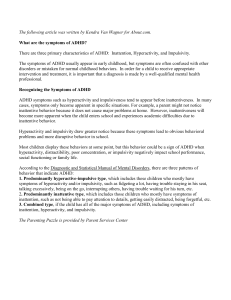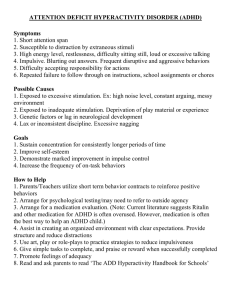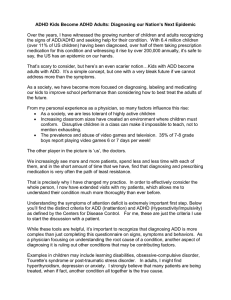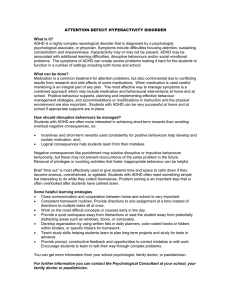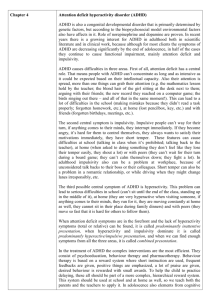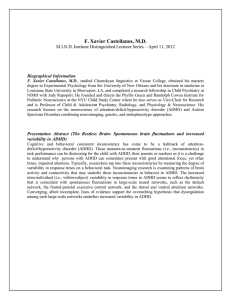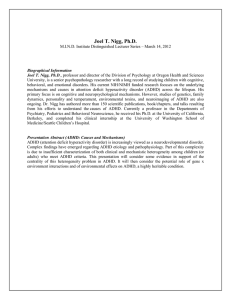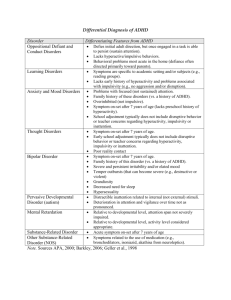ADHD
advertisement
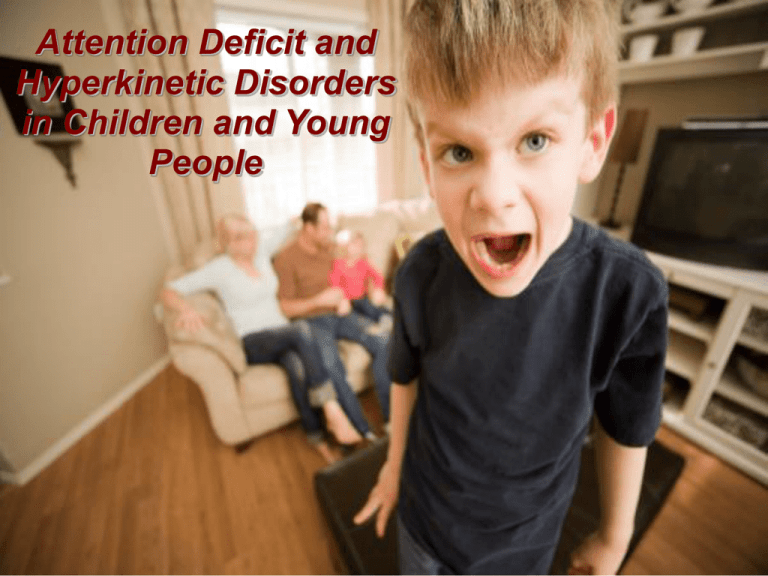
Attention Deficit and Hyperkinetic Disorders in Children and Young People ADHD/HKD – What are they? Heterogeneous behavioural syndrome Symptoms of inattention, hyperactivity and impulsivity HKD (ICD-10) – more severe disturbance with significant hyperactivity component Commonly diagnosed disorder with M:F ratio (ADHD prevalence) of 4:1 Why is it important? Common! Affected children/young people often unpopular with adults and peers Often fail to achieve potential Comorbid difficulties often present Diagnostic Criteria (1) Core symptoms: Inattention Hyperactivity Impulsive behaviour DSM-IV and ICD-10 criteria are similar but DSM identifies 3 subtypes: Predominately inattentive, predominately hyperactive/impulse AND combined Diagnostic Criteria (2) To meet diagnostic criteria: Onset before age 7 (ADHD) or 6 (HKD) At least 6 months Pervasive Caused significant functional impairment Not better accounted for by other mental disorders Beware failure to meet above → sig.difficulties Outcomes No good quality data for ADHD in Scotland Rate diminishes in adolescence/can persist Predictors include: maternal depression, marital discord, -ve parent-child interaction, family disadvantage and FHx. Current service provision for adults is limited (See NICE guidance) Treatment/Therapy Dietary modification Psychological: Behavioural parent training School-based interventions Pharmacological therapy: Only initiated by specialists Shared care once started (Annex 2) No evidence of benefit from alternative therapies Mephylphenidate Atomoxetine


